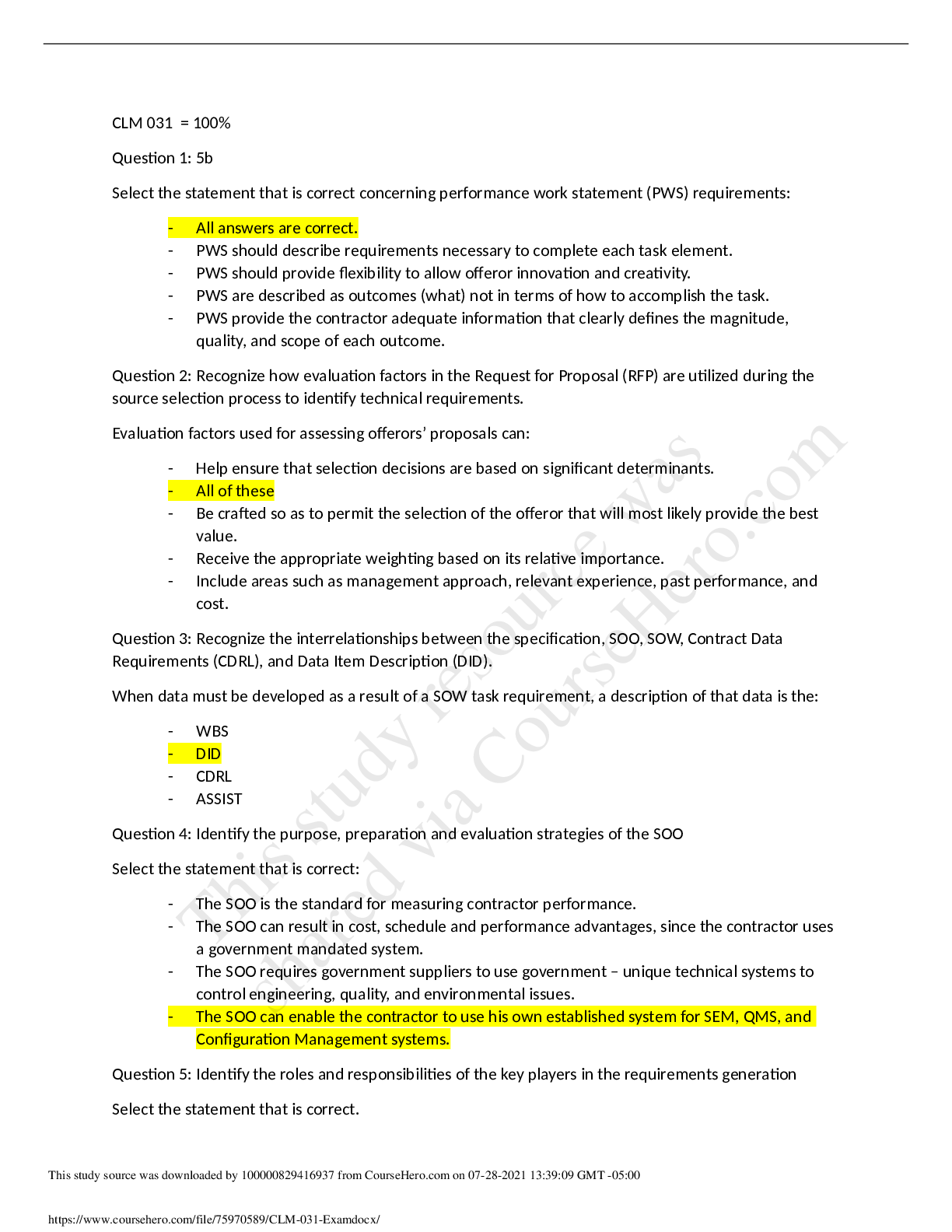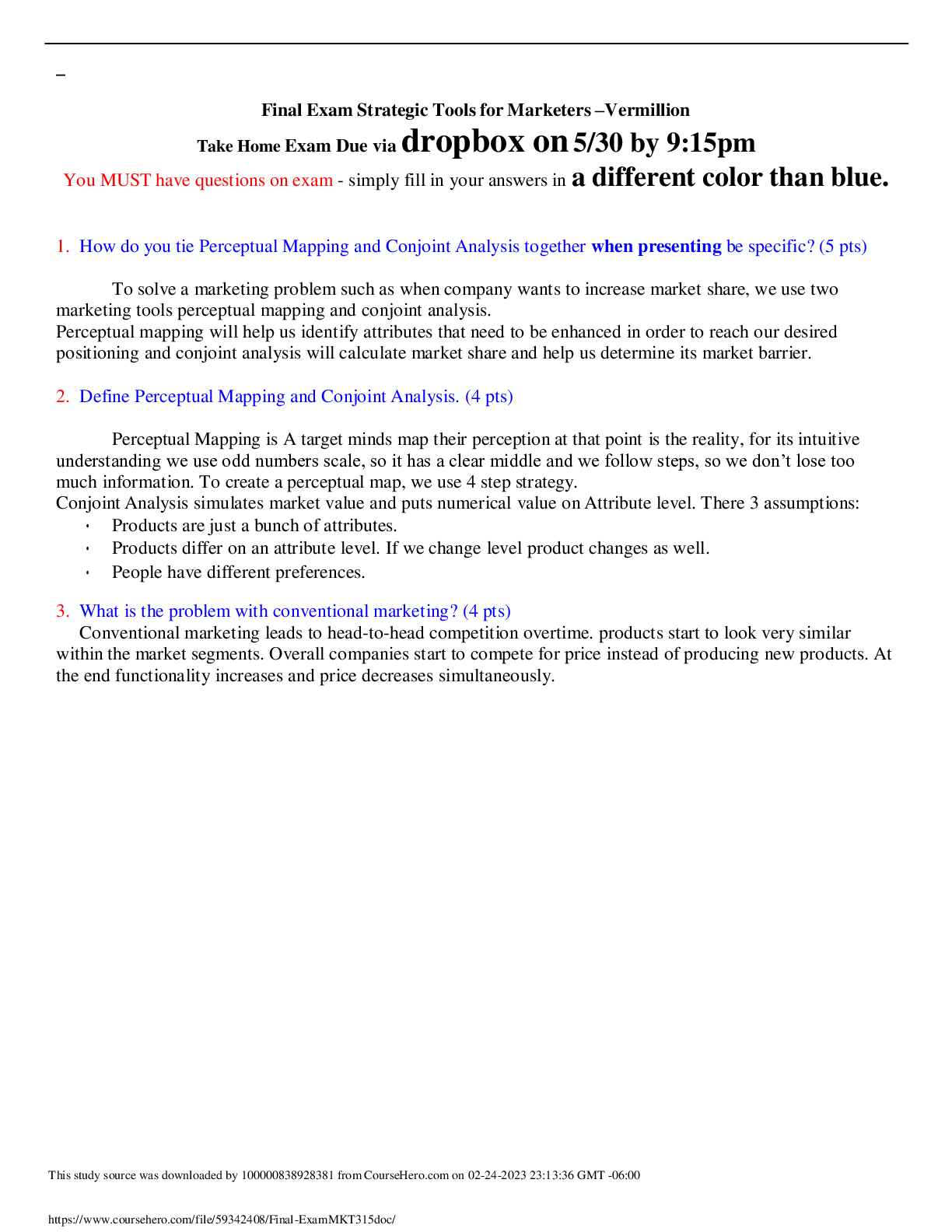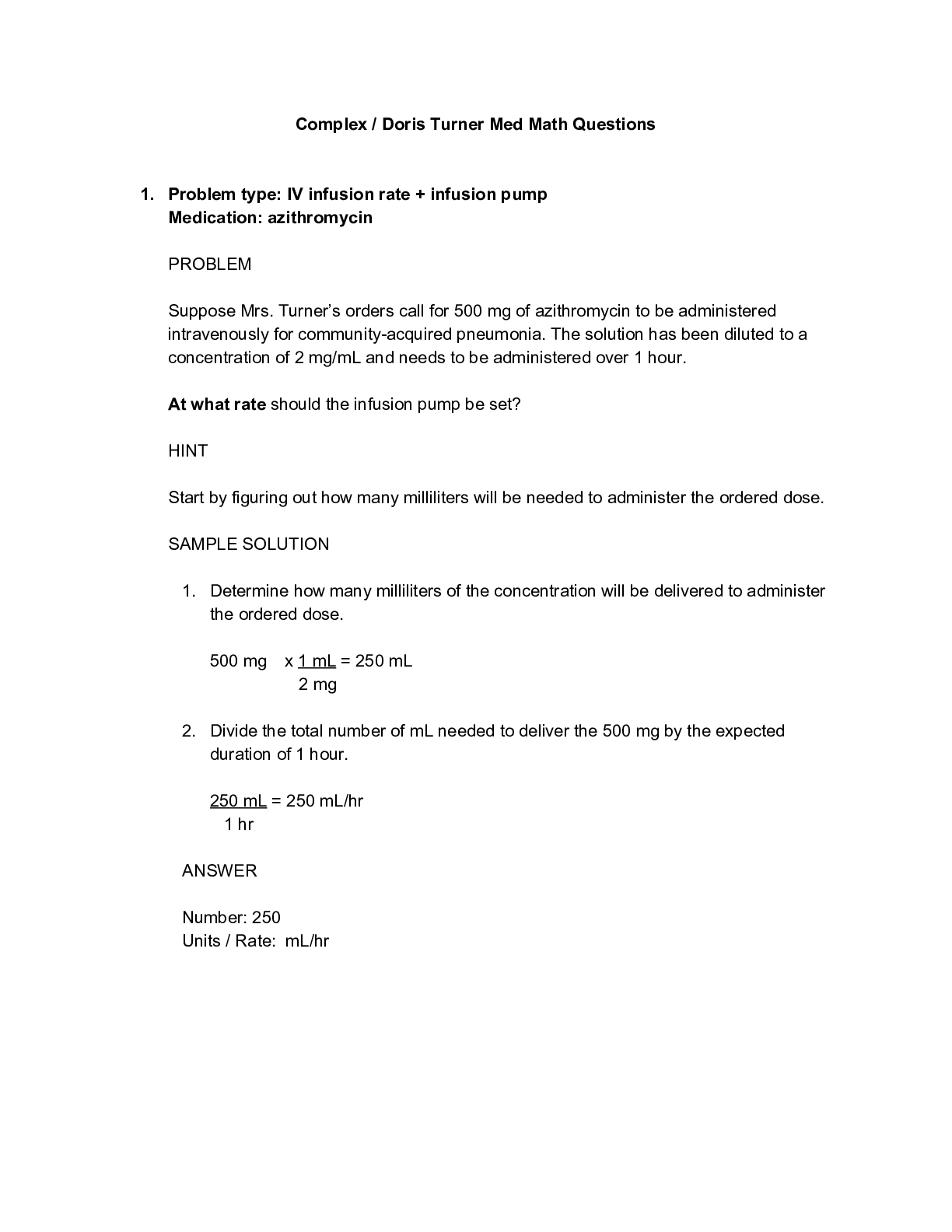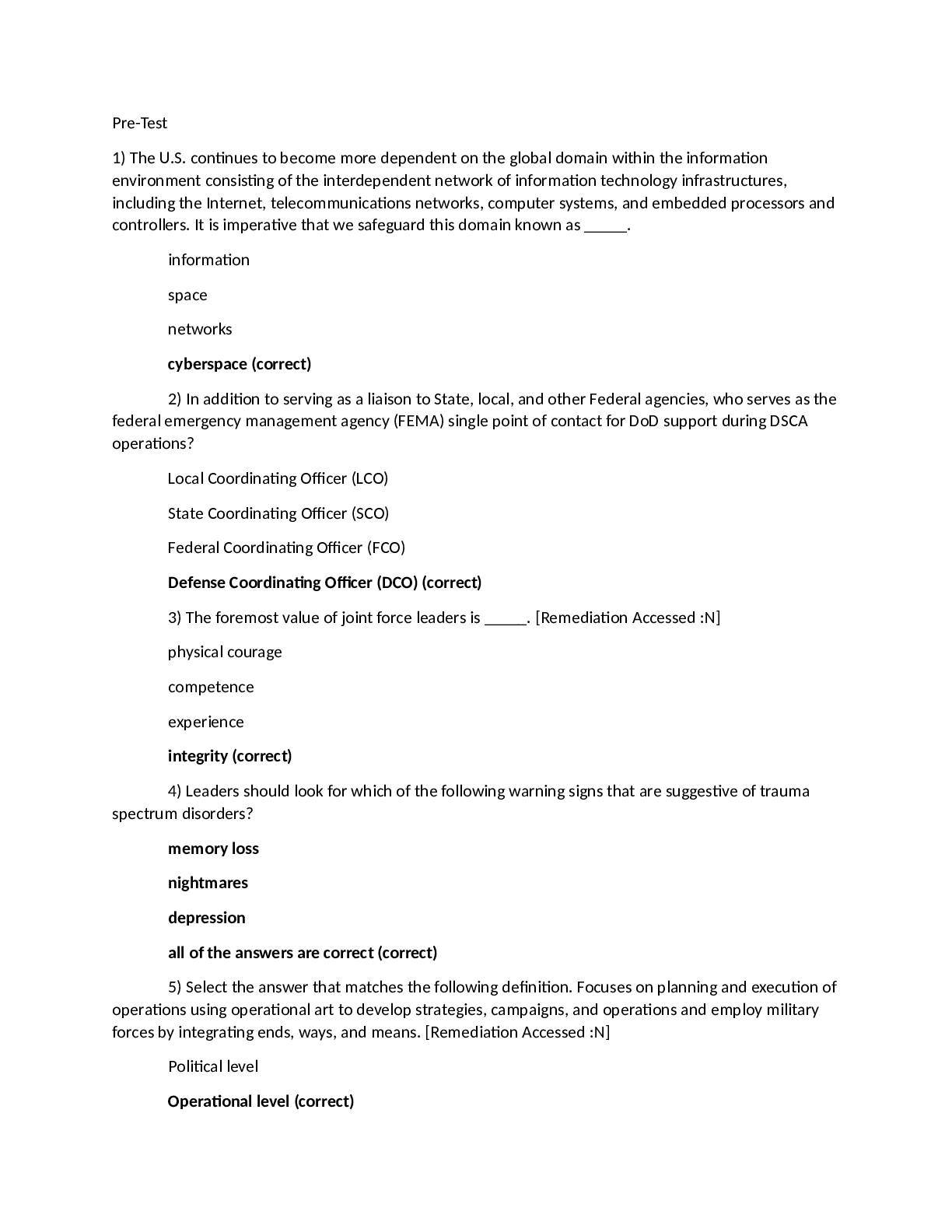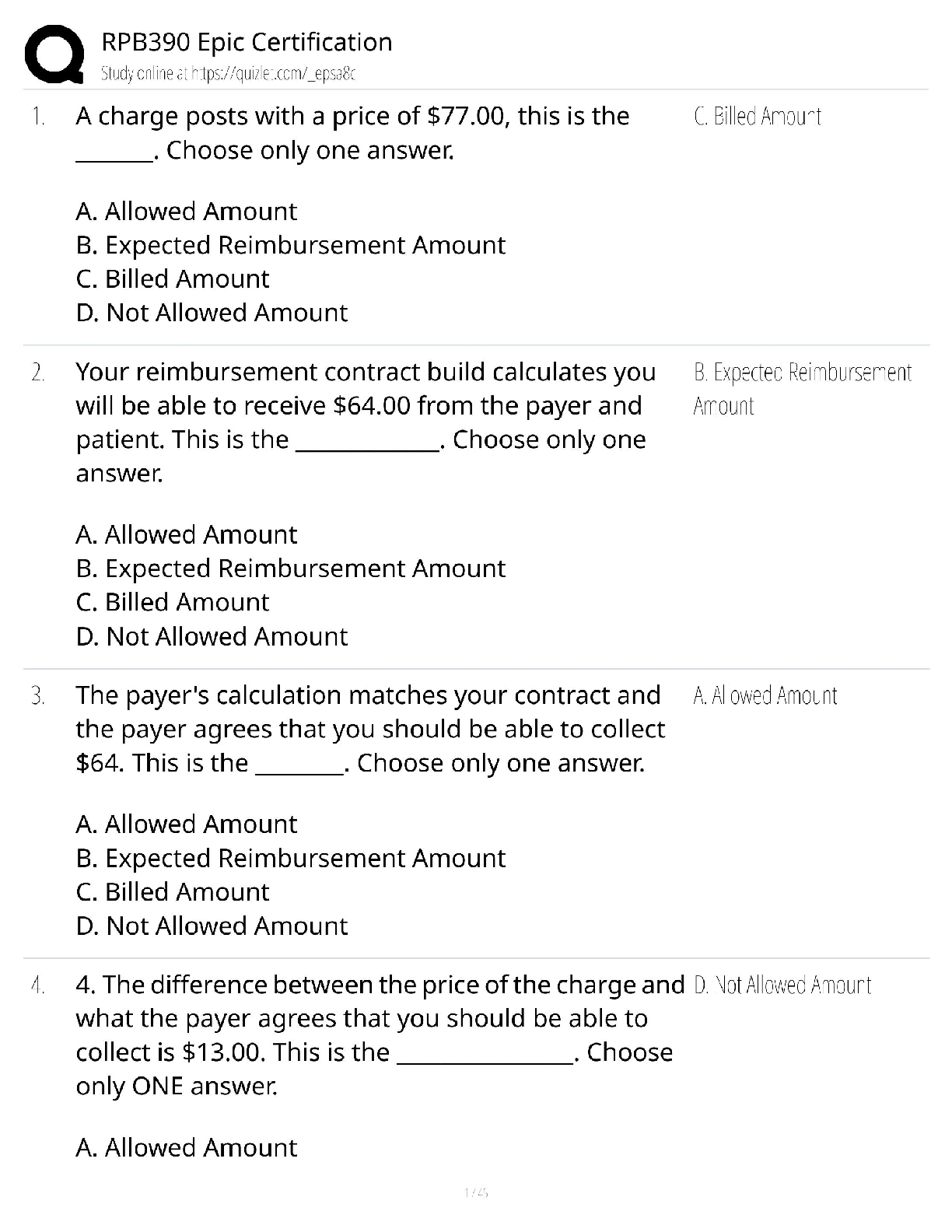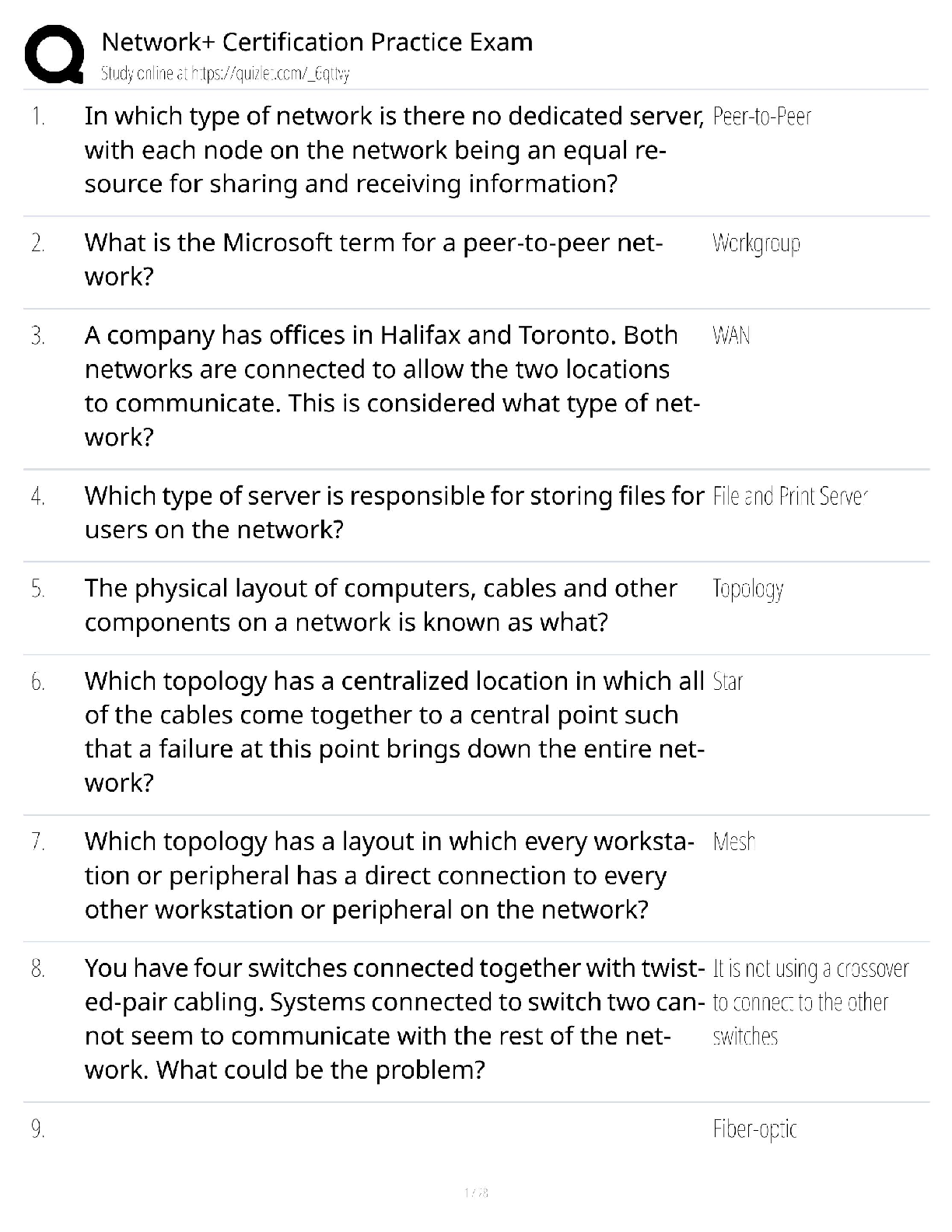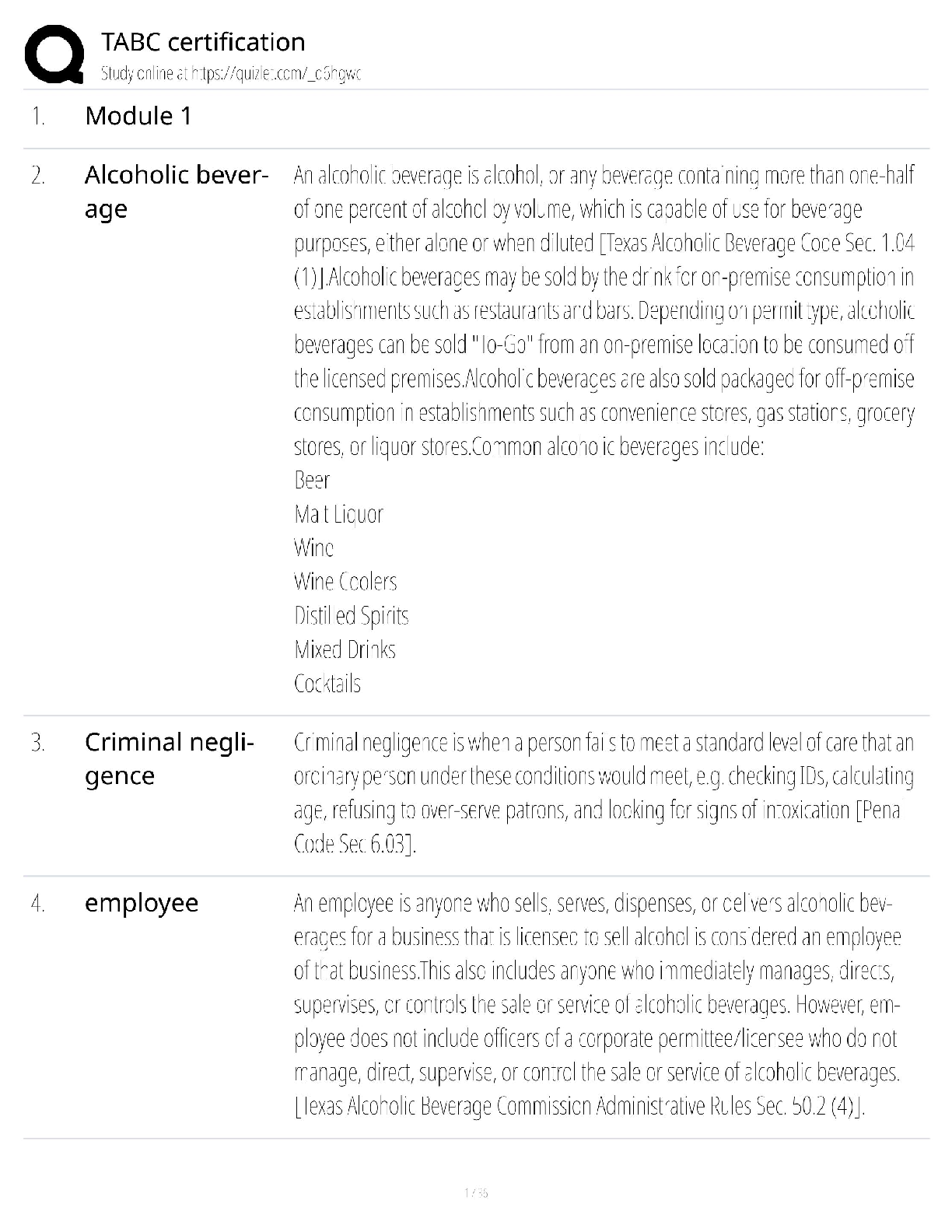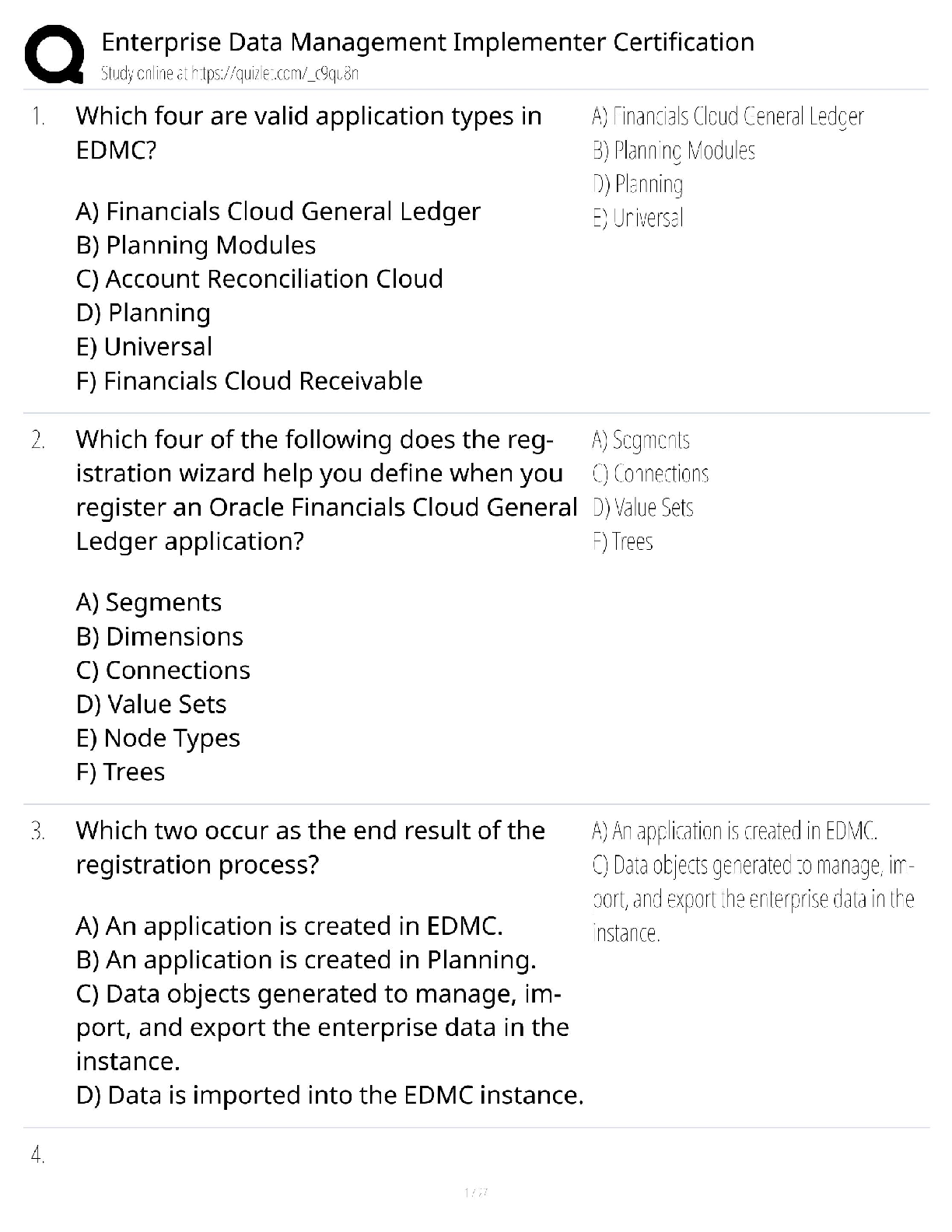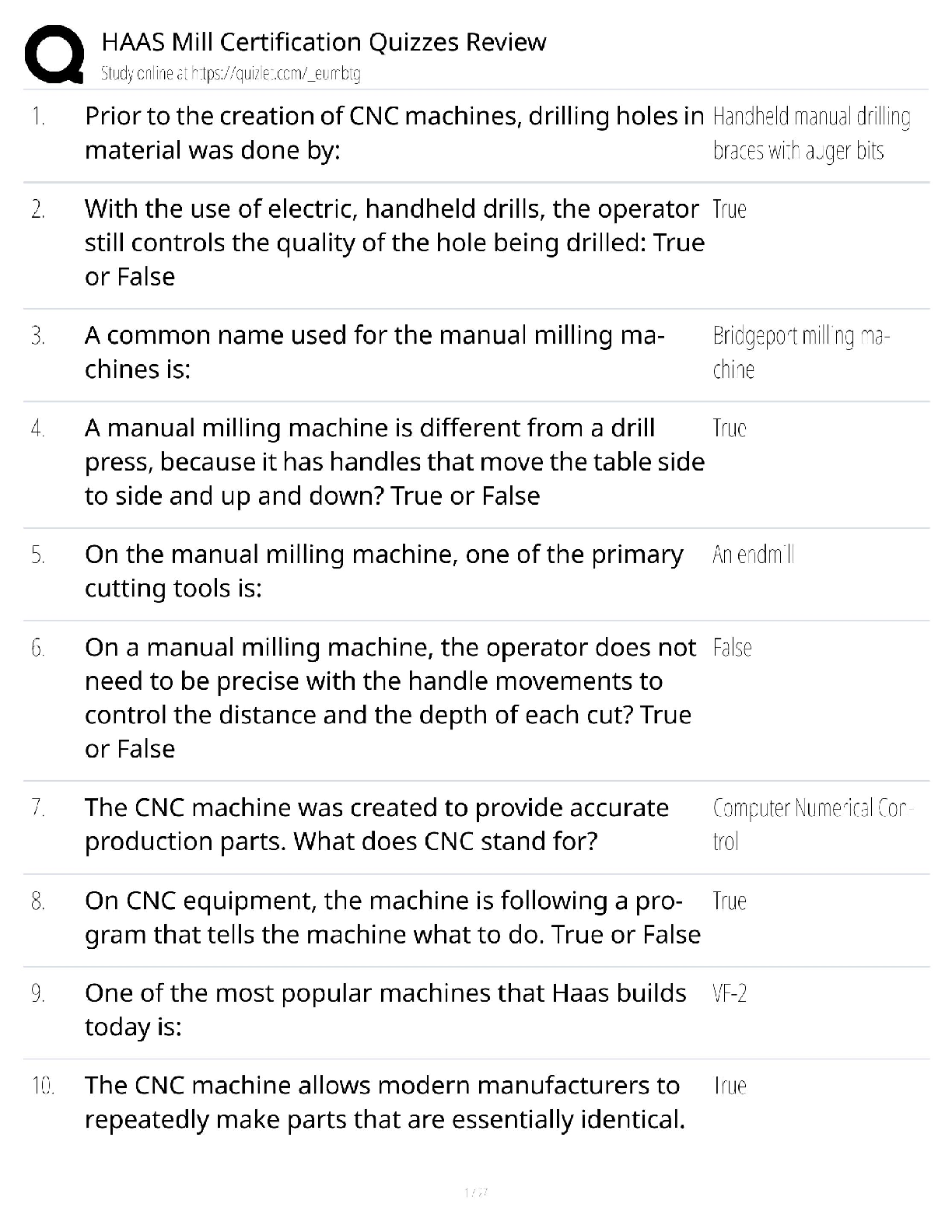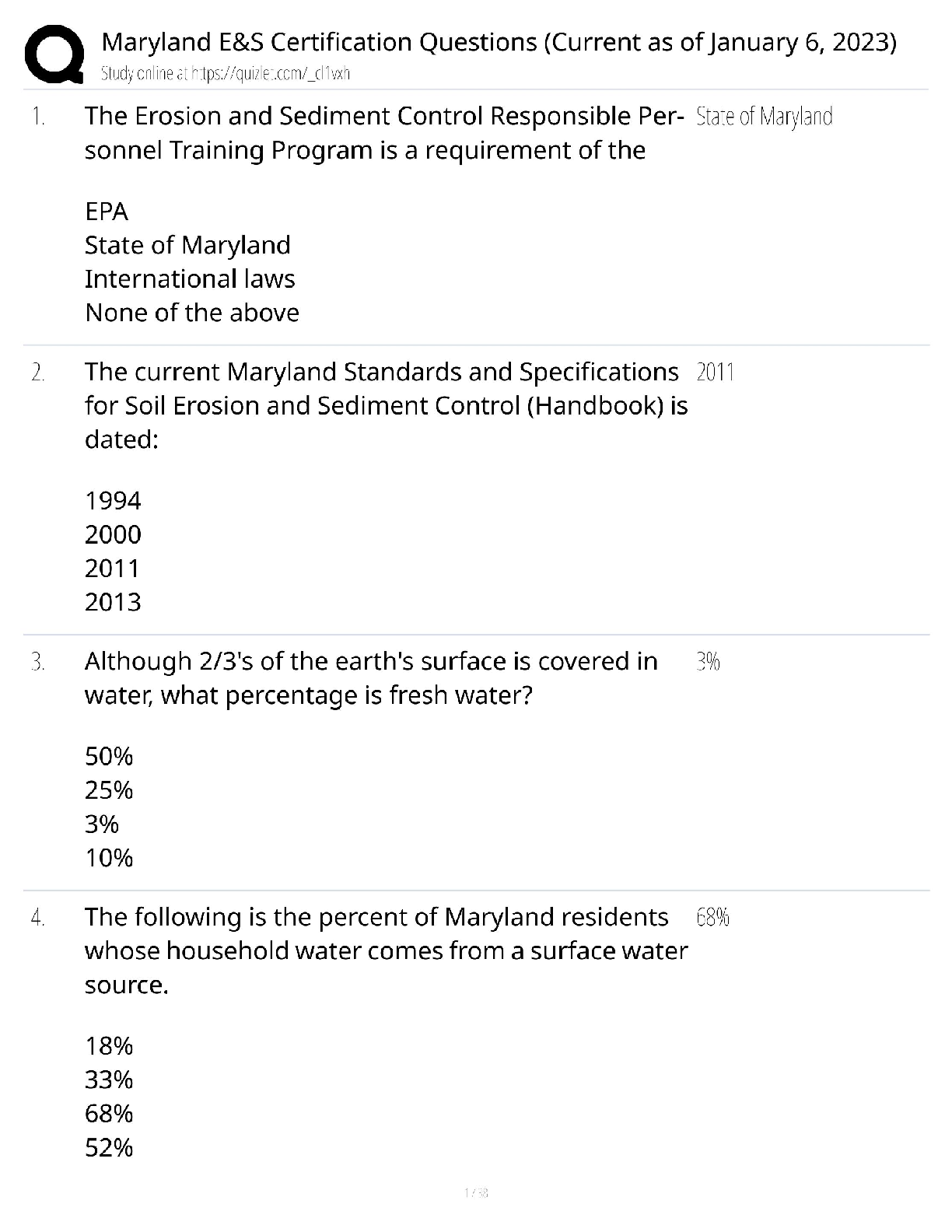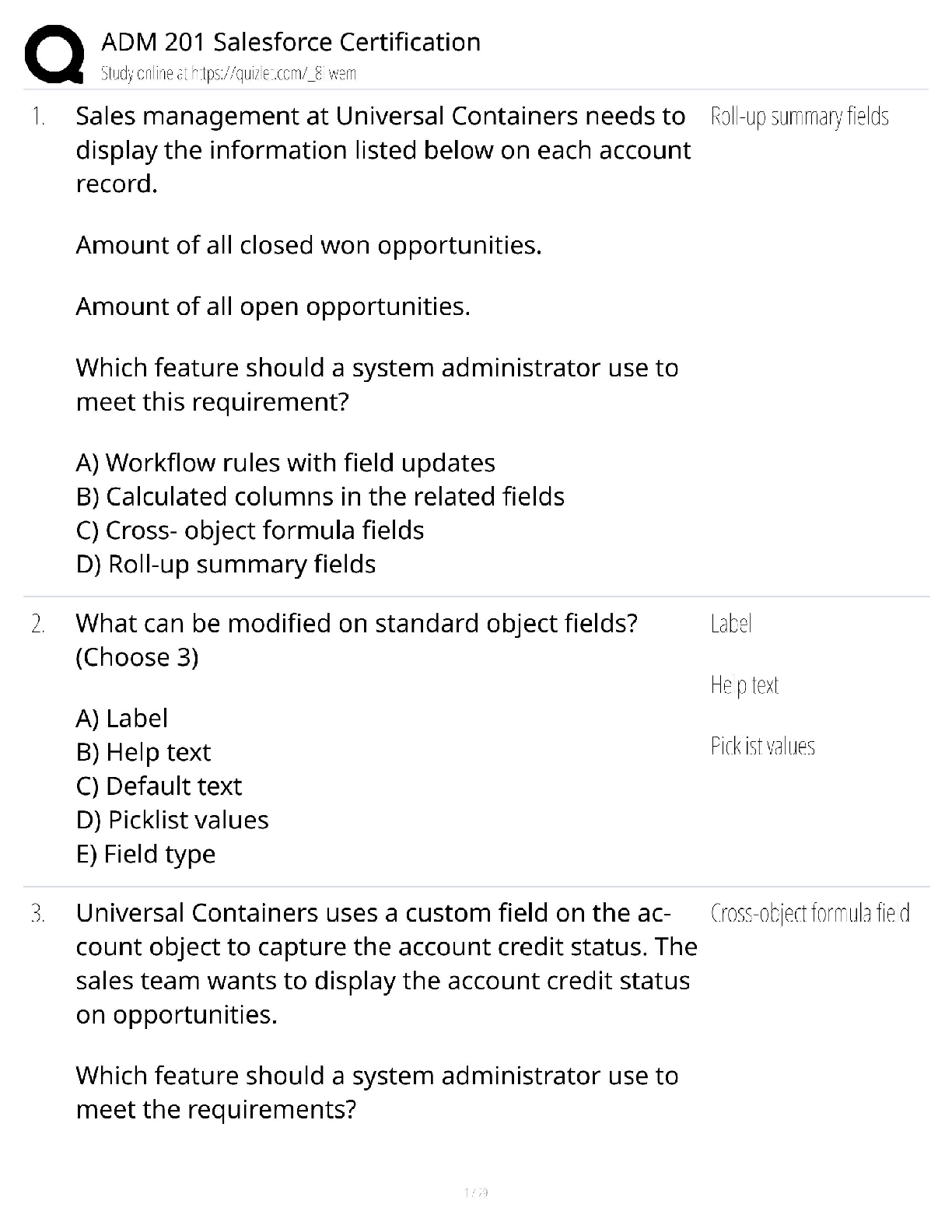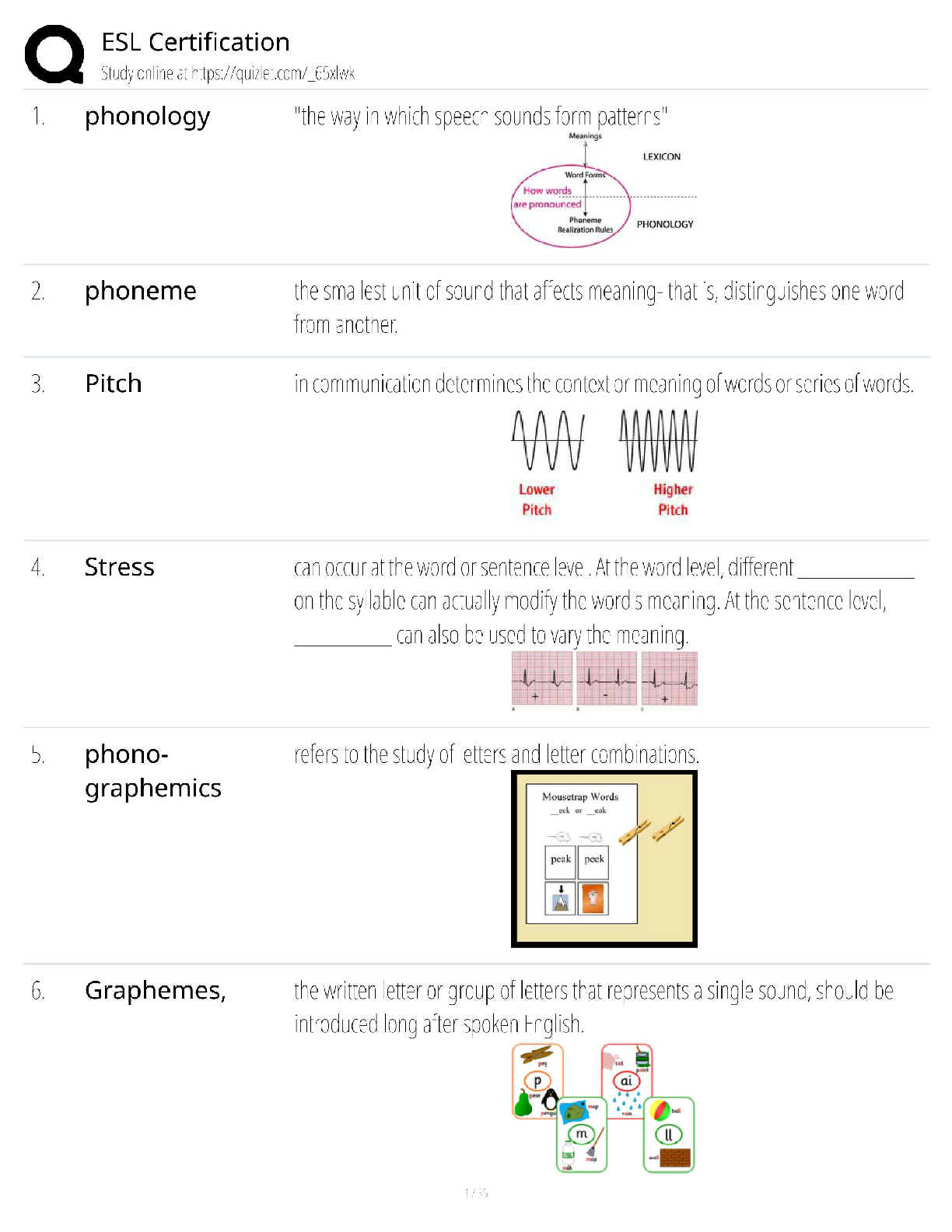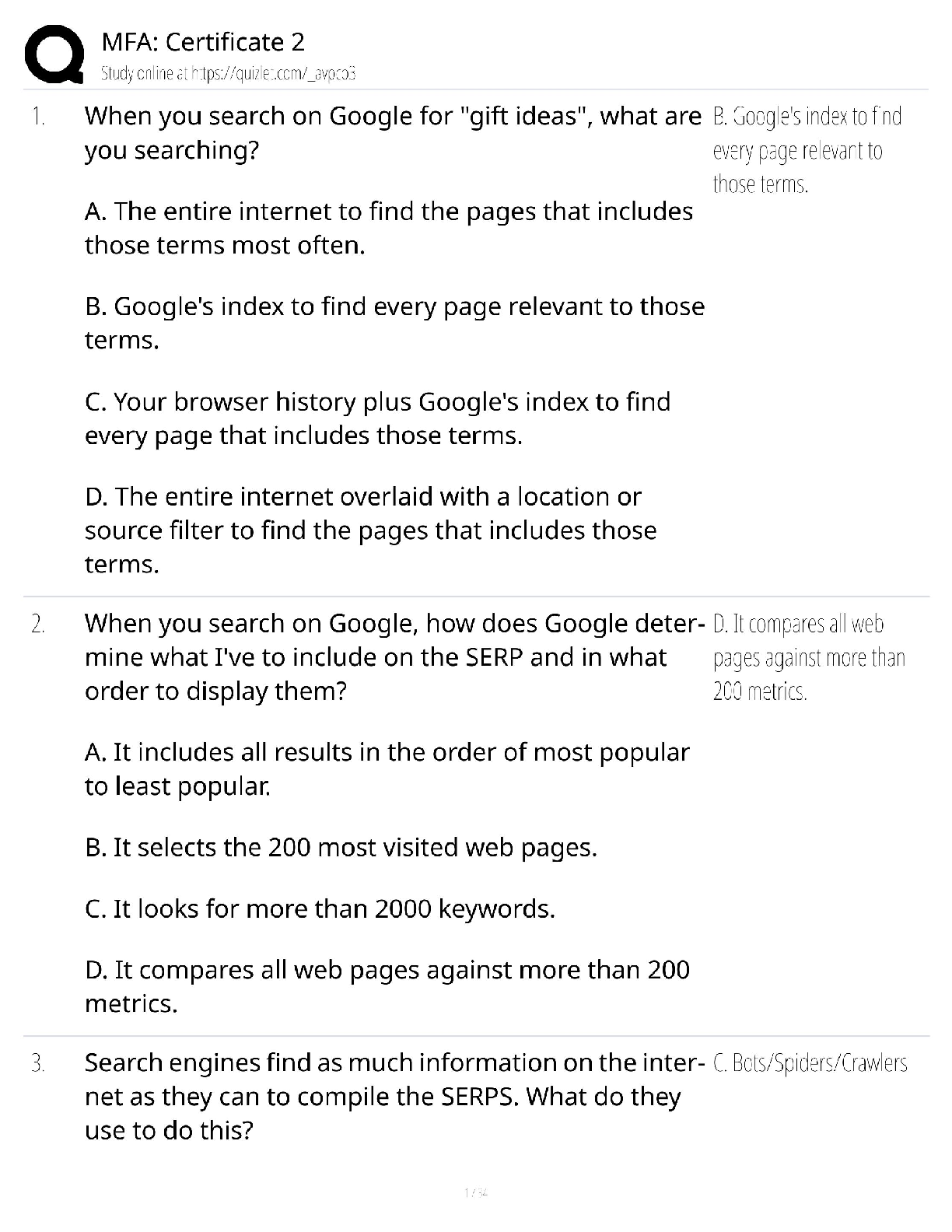Anatomy and Physiology - A&P 2 > QUESTIONS & ANSWERS > BIO202_MH_V3_Topic 7: Digestive System (QUESTIONS AND CORRECT ANSWERS) GRADED A+_PERFECT TOOL FOR RE (All)
BIO202_MH_V3_Topic 7: Digestive System (QUESTIONS AND CORRECT ANSWERS) GRADED A+_PERFECT TOOL FOR REVISION
Document Content and Description Below
Page path BIO202_MH_V3 Topic 7: Digestive System Started on Friday, October 22, 2021, 4:55 PM State Finished Completed on Friday, October 22, 2021, 5:24 PM Time taken 29 mins 1 sec Grad ... e 40.00 out of 40.00 (100%) Question 1 Correct 2.00 points out of 2.00 Flag question Question text Which of the following regions of the stomach is correctly matched with its description? Select one: a. body - portion closest to the esophagus b. pylorus - the most inferior portion of the stomach c. fundus - opening from the stomach into the duodenum d. cardiac region - the largest portion of the stomach e. pyloric opening - opening from the esophagus Question 2 Correct 2.00 points out of 2.00 Flag question Question text The gallbladder Select one: a. produces bile. b. is attached to the pancreas. c. stores bile. d. produces secretin. e. breaks down red blood cells. Question 3 Correct 2.00 points out of 2.00 Flag question Question text Which of the following cell types of the stomach is correctly matched with its function? Select one: a. mucous cells - produce intrinsic factor b. parietal cells - produce hydrochloric acid c. chief cells - produce mucus d. endocrine cells - produce enzymes e. chief cells - produce hormones Question 4 Correct 2.00 points out of 2.00 Flag question Question text Which of the following is a function of the hepatocytes? Select one: a. produce digestive enzymes b. synthesize hormones c. produce hydrochloric acid d. synthesize bile e. regulate pH Question 5 Correct 2.00 points out of 2.00 Flag question Question text What is the function of the gallbladder? Select one: a. produce bile b. store bicarbonate c. add pigment to bile d. store and concentrate bile Question 6 Correct 2.00 points out of 2.00 Flag question Question text Arrange the following in proper sequence: (1) digestion (2) elimination (3) ingestion (4) absorption Select one: a. 3, 4, 2, 1 b. 1, 4, 3, 2 c. 4, 1, 2, 3 d. 3, 4, 1, 2 e. 3, 1, 4, 2 Question 7 Correct 2.00 points out of 2.00 Flag question Question text Assume we could alter the conditions in the duodenum. If we inserted a large volume of highly acidic chyme which contained a large amount of fat, which of the following responses are consistent with that? (1) decreased gastric acid secretion (2) increased bile production (3) increased pancreatic bicarbonate production and pancreatic enzyme secretion (4) increased secretin and cholecystokinin Select one: a. 1, 2, 3, 4 b. 1, 2, 3 c. 2, 3, 4 d. 1, 3, 4 e. 1, 2, 4 Question 8 Correct 2.00 points out of 2.00 Flag question Question text When chyme enters the duodenum, ____ is released and stimulates the pancreas to secrete bicarbonates. Select one: a. gastrin b. secretin c. insulin d. cholecystokinin e. glucagon Question 9 Correct 2.00 points out of 2.00 Flag question Question text Which of the following does NOT illustrate digestion? Select one: a. polysaccharides → disaccharides b. fat → fatty acids and glycerol c. CO2 and H2O→carbohydrates d. protein → amino acids e. disaccharides → monosaccharides Question 10 Correct 2.00 points out of 2.00 Flag question Question text The formation of HCl in the stomach involves the Select one: a. active transport of hydrogen ions from parietal cells into the lumen of the stomach. b. exchange of sodium ions for hydrogen ions in the transport process. c. active transport of chloride ions from parietal cells into the lumen of the stomach. d. exchange of sodium and bicarbonate ions. e. the combination of carbon dioxide and water. Question 11 Correct 2.00 points out of 2.00 Flag question Question text Arrange the following in order from largest to smallest: (1) dipeptide (2) protein (3) amino acid (4) polypeptide Select one: a. 3, 1, 4, 2 b. 4, 1, 2, 3 c. 2, 4, 1, 3 d. 1, 2, 3, 4 e. 2, 4, 3, 1 Question 12 Correct 2.00 points out of 2.00 Flag question Question text The myenteric plexus is found in the _____ of the digestive tract wall. Select one: a. mucosa b. serosa c. submucosa d. muscularis e. adventitia Question 13 Correct 2.00 points out of 2.00 Flag question Question text Which of the following is associated with the tongue? Select one: a. uvula b. constrictor muscles c. papillae and taste buds d. periodontal ligament e. fauces Question 14 Correct 2.00 points out of 2.00 Flag question Question text What are the two major neurotransmitters of the ENS in the digestive tract? Select one: a. epinephrine and serotonin b. epinephrine and norepinephrine c. acetylcholine and epinephrine d. norepinephrine and acetylcholine Question 15 Correct 2.00 points out of 2.00 Flag question Question text Which of the following components of saliva is mismatched with its function? Select one: a. mucin - lubricant b. lysozyme - antibacterial properties c. bicarbonate - neutralizes acid d. IgA - prevents infection e. salivary amylase - begins protein digestion Question 16 Correct 2.00 points out of 2.00 Flag question Question text The epiglottis covers the opening into the larynx during Select one: a. the voluntary phase of swallowing. b. the pharyngeal phase of swallowing. c. the esophageal phase of swallowing. d. the gastric phase of swallowing. e. the oral phase of swallowing. Question 17 Correct 2.00 points out of 2.00 Flag question Question text Gastritis, peptic ulcers and gastric cancer can all be caused by Select one: a. Helicobacter pylori, a bacterium. b. increased secretion of gastric bicarbonate. c. pH of the stomach contents continuously greater than 4. d. increased mucus production by the neck cells. e. None of these choices is correct. Question 18 Correct 2.00 points out of 2.00 Flag question Question text Inflammation of the gums is called Select one: a. dental carries. b. pyorrhea. c. halitosis. d. gingivitis. Question 19 Correct 2.00 points out of 2.00 Flag question Question text How are ions such as sodium, potassium, calcium, magnesium, and phosphate transported from the intestinal lumen? Select one: a. passive transport b. osmosis c. diffusion d. active transport Question 20 Correct 2.00 points out of 2.00 Flag question Question text Insulin increases the rate of _____ transport into cells. Select one: a. sucrose b. fructose c. glucose d. galactose e. lactos [Show More]
Last updated: 3 years ago
Preview 1 out of 11 pages
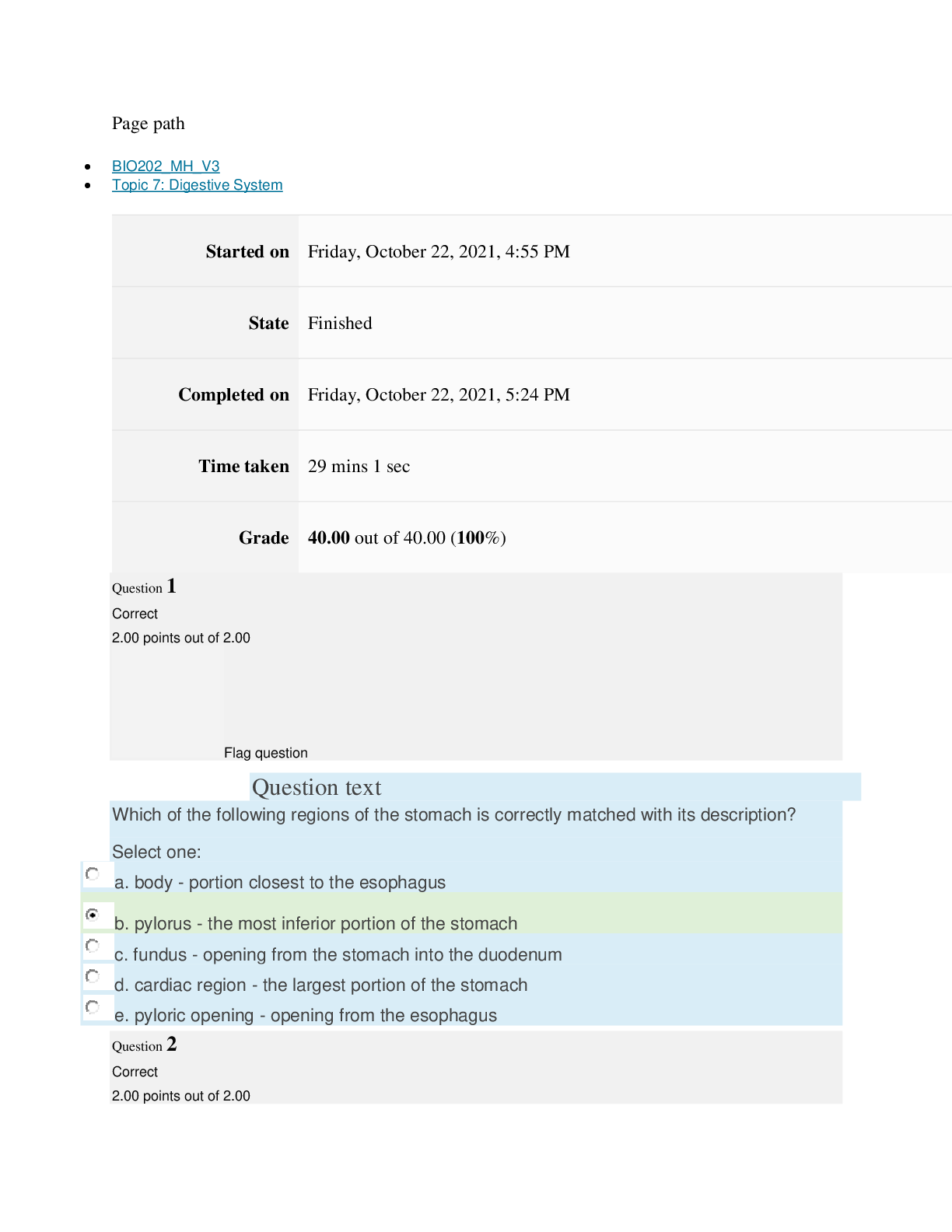
Buy this document to get the full access instantly
Instant Download Access after purchase
Buy NowInstant download
We Accept:

Also available in bundle (1)
Click Below to Access Bundle(s)

ANATOMY AND PHYSIOLOGY 2
TOPICS: CUMULATIVE MIDTERM EXAMS CARDIOVASCULAR SYSTEM: BLOOD CARDIOVASCULAR SYSTEM: THE HEART CARDIOVASCULAR SYSTEM: BLOOD VESSELS AND CIRCULATION LYMPHATIC SYSTEM IMMUNITY RESPIRATORY SYSTEM...
By Book Worm, Certified 3 years ago
$30
14
Reviews( 0 )
$7.50
Can't find what you want? Try our AI powered Search
Document information
Connected school, study & course
About the document
Uploaded On
Dec 04, 2022
Number of pages
11
Written in
All
Additional information
This document has been written for:
Uploaded
Dec 04, 2022
Downloads
0
Views
180


